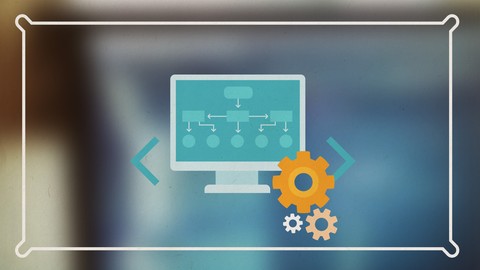
Introduction to Semiconductor Diodes and Transistors
Introduction to Semiconductor Diodes and Transistors, available at $29.99, has an average rating of 4.79, with 8 lectures, based on 79 reviews, and has 3612 subscribers.
You will learn about Student will learn the Basic of semiconductor(s) along with Semiconduct Diode Basics and Transistor Semiconductor Basics This course is ideal for individuals who are This course is for students that have completed basic electronic circuit fundamentals course & understand Ac & Dc Voltages & Voltage dividers and have understanding of ohms law. It is particularly useful for This course is for students that have completed basic electronic circuit fundamentals course & understand Ac & Dc Voltages & Voltage dividers and have understanding of ohms law.
Enroll now: Introduction to Semiconductor Diodes and Transistors
Summary
Title: Introduction to Semiconductor Diodes and Transistors
Price: $29.99
Average Rating: 4.79
Number of Lectures: 8
Number of Published Lectures: 8
Number of Curriculum Items: 8
Number of Published Curriculum Objects: 8
Original Price: $24.99
Quality Status: approved
Status: Live
What You Will Learn
- Student will learn the Basic of semiconductor(s) along with Semiconduct Diode Basics and Transistor Semiconductor Basics
Who Should Attend
- This course is for students that have completed basic electronic circuit fundamentals course & understand Ac & Dc Voltages & Voltage dividers and have understanding of ohms law.
Target Audiences
- This course is for students that have completed basic electronic circuit fundamentals course & understand Ac & Dc Voltages & Voltage dividers and have understanding of ohms law.
Al explains semiconductor Basics, Valance Electrons in Conductors. The difference between semiconductors & conductors. Describes the doping process in, semiconductor material. What is N & P type Material . Majority & Minority Carries Explained .
Diode Curves and Characteristics, of forward and reverse Current flow, by using the Characteristic Diode Curve. Physical Diode Packaging Explained. Electron flow thru Diodes explained.
Schematic Symbol of Diode, Cathode and Anode placement explained. Placement of Physical Diode Explained. How to test a diode, with an ohm meter. A simple diode application Explained.
Half Wave rectification, how to calculate peak voltage and the Average DC voltage of a half wave rectification circuit. Basic capacitor filter action is also explained.
Full wave rectification, full wave bridge rectification explained and the introduction of the transformers. The Average DC Value of a full wave Rectifier explained.
Introduction the two types of junction transistors PNP and NPN . Details reverse and forward bias on the junction transistor(s). Introduction of the three elements of the transistor. Explains the schematic Symbols of the transistor (NPN & PNP). Physical packaging of the transistors shown and explained. How to test a transistor with an ohm meter. Introduction alpha and Beta properties of the transistors along with Ie = Ib + Ic .
Explanation of alpha and Beta properties of the transistors along with Ie = Ib + Ic.Introduces Load -line (s)with a common emitter circuit . Explanation of both DC and AC transistor parameter’s using the load line. How to find RL using the load line. Phase shift in a common emitter transistor.
Explanation of the common Collector Circuit ( also called the emitter follower) Circuit action. Common Base configuration circuit action explained. Summary of the three transistor Configurations, Common emitter, Common collector and Common base.
Course Curriculum
Chapter 1: Semiconductor Basics
Lecture 1: Introduction Semiconductors
Chapter 2: Diode Basics
Lecture 1: Diode Introduction
Lecture 2: Diodes #1
Lecture 3: Lecture #2
Lecture 4: Lecture #3
Chapter 3: Transistors Basics
Lecture 1: Transistor Basics 1
Lecture 2: Transistor Basics 2
Lecture 3: Transistor Basics 3
Instructors
-
albert spinosa
Electronic(s) and Computer Instruction Made Easy
Rating Distribution
- 1 stars: 2 votes
- 2 stars: 2 votes
- 3 stars: 4 votes
- 4 stars: 14 votes
- 5 stars: 57 votes
Frequently Asked Questions
How long do I have access to the course materials?
You can view and review the lecture materials indefinitely, like an on-demand channel.
Can I take my courses with me wherever I go?
Definitely! If you have an internet connection, courses on Udemy are available on any device at any time. If you don’t have an internet connection, some instructors also let their students download course lectures. That’s up to the instructor though, so make sure you get on their good side!
You may also like
- Top 10 Language Learning Courses to Learn in November 2024
- Top 10 Video Editing Courses to Learn in November 2024
- Top 10 Music Production Courses to Learn in November 2024
- Top 10 Animation Courses to Learn in November 2024
- Top 10 Digital Illustration Courses to Learn in November 2024
- Top 10 Renewable Energy Courses to Learn in November 2024
- Top 10 Sustainable Living Courses to Learn in November 2024
- Top 10 Ethical AI Courses to Learn in November 2024
- Top 10 Cybersecurity Fundamentals Courses to Learn in November 2024
- Top 10 Smart Home Technology Courses to Learn in November 2024
- Top 10 Holistic Health Courses to Learn in November 2024
- Top 10 Nutrition And Diet Planning Courses to Learn in November 2024
- Top 10 Yoga Instruction Courses to Learn in November 2024
- Top 10 Stress Management Courses to Learn in November 2024
- Top 10 Mindfulness Meditation Courses to Learn in November 2024
- Top 10 Life Coaching Courses to Learn in November 2024
- Top 10 Career Development Courses to Learn in November 2024
- Top 10 Relationship Building Courses to Learn in November 2024
- Top 10 Parenting Skills Courses to Learn in November 2024
- Top 10 Home Improvement Courses to Learn in November 2024






















